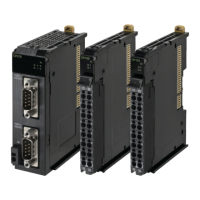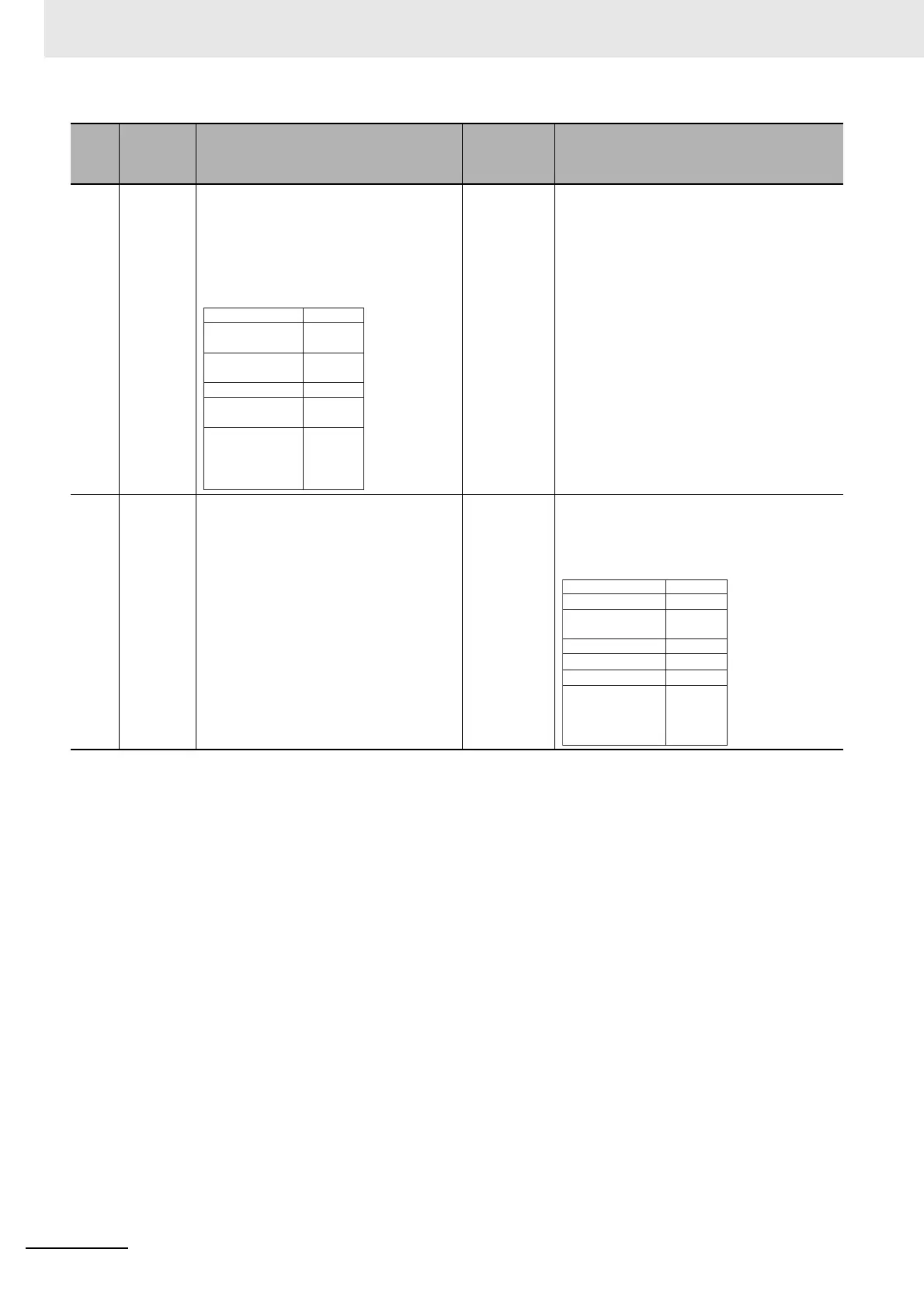7 Serial Communications
7 - 26
NX-series Communications Interface Units User’s Manual (W540)
7 Checking
response
reception
• The communications master outputs
th
e following output notification data to
notify the CIF Unit that the response
was received.
• When the port is restarted, the value of
t
he Output SID is initialized to 00 hex.
• The CIF Unit receives the output notifica-
tion data given on the left.
• The CIF Unit knows that the response was
norma
lly received by the CPU Unit or com-
munications master because the Input SID
Re
sp
onse in the output notification data is
01 hex.
8 Response
to initia
l-
ized
Out-
put SID
• The communications master receives
th
e input notification data given on the
right.
• The communications master knows
th
at initialized Output SID was nor-
mally received by the CIF Unit because
th
e Outpu
t SID Response in the input
notification data is 00 hex.
The CIF Unit inputs the following input notifi-
cation data to tell the CPU Unit or communi-
cations master that the ini
tialized Output SID
was received normally.
*1. : Output notification data is output from the CPU Unit or communications master to the CIF Unit.
: Input notification data is input from the CIF Unit to the CPU Unit or communications master.
Step Process
CPU Unit or communications master
processing
Communi-
cations
direction
*1
CIF Unit processing
Initialization
Set the Input
SID.
00 hex
01 hex
0000 hex
0000 hex
0000 hex
00 hex,
00 hex,
00 hex,
00 hex
Output SID
Input SID
Response
Output Data
Type
Output Sub Info
Output Data
Length
Output Data 01
0010 hex
05 hex
00 hex
2000 hex
0000 hex
0000 hex
00 hex,
00 hex,
00 hex,
00 hex
Set the Output
SID.
Input Data 01
Port Status
Input SID
Output SID
Response
Input Data Type
Input Sub Info
Input Data Length

